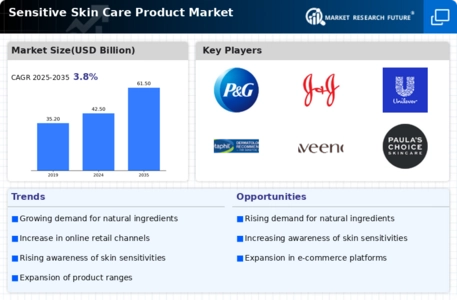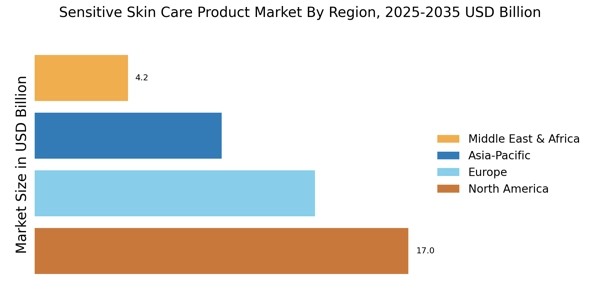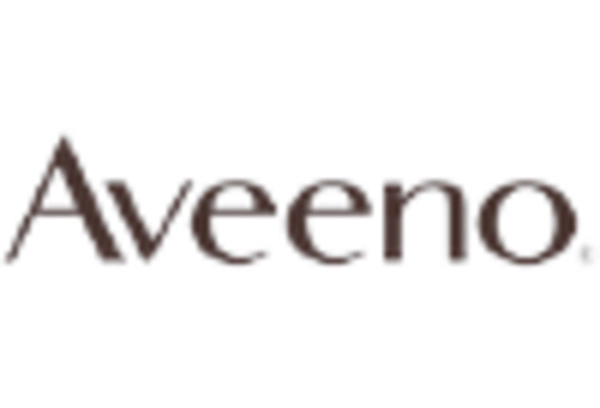Rise of E-commerce Platforms
The proliferation of e-commerce platforms has transformed the retail landscape, significantly impacting the Sensitive Skin Care Product Market. With the convenience of online shopping, consumers can easily access a wide range of sensitive skin care products from various brands. Market data indicates that online sales of skincare products have seen a substantial increase, with many consumers preferring to purchase sensitive skin care items online due to the availability of detailed product information and customer reviews. This trend not only broadens the reach of sensitive skin care brands but also allows for targeted marketing strategies that cater to specific consumer needs. As e-commerce continues to grow, it is likely that the Sensitive Skin Care Product Market will benefit from increased visibility and accessibility.
Growing Awareness of Skin Sensitivities
The increasing awareness of skin sensitivities among consumers appears to be a pivotal driver for the Sensitive Skin Care Product Market. As individuals become more informed about the potential irritants in conventional skincare products, they are likely to seek alternatives that cater specifically to their needs. This trend is reflected in market data, which indicates that the demand for products formulated without harsh chemicals has surged. In fact, a significant portion of consumers now actively looks for hypoallergenic and dermatologist-tested labels. This shift in consumer behavior suggests that brands focusing on sensitive skin formulations may experience enhanced market penetration and loyalty, thereby contributing to the overall growth of the Sensitive Skin Care Product Market.
Demand for Clean and Sustainable Products
The rising demand for clean and sustainable products is emerging as a key driver in the Sensitive Skin Care Product Market. Consumers are becoming more conscious of the environmental impact of their purchases and are increasingly seeking products that align with their values. This trend is evident in market data, which shows a growing preference for brands that utilize eco-friendly packaging and ethically sourced ingredients. As a result, companies that prioritize sustainability in their product offerings may find themselves at a competitive advantage. This shift towards clean beauty not only reflects changing consumer attitudes but also suggests that the Sensitive Skin Care Product Market is likely to evolve in response to these preferences.
Influence of Social Media and Influencers
The influence of social media and beauty influencers plays a crucial role in shaping consumer preferences within the Sensitive Skin Care Product Market. As consumers increasingly turn to social media platforms for skincare advice, the visibility of sensitive skin care products has expanded dramatically. Influencers often share personal experiences and recommendations, which can significantly sway purchasing decisions. Market data suggests that products endorsed by trusted figures in the beauty community tend to see a spike in sales. This phenomenon indicates that brands leveraging social media marketing strategies may enhance their brand awareness and consumer engagement, ultimately driving growth in the Sensitive Skin Care Product Market.
Regulatory Support for Skin Care Standards
Regulatory support for skin care standards is becoming an influential factor in the Sensitive Skin Care Product Market. Governments and regulatory bodies are increasingly establishing guidelines to ensure the safety and efficacy of skincare products, particularly those designed for sensitive skin. This regulatory framework not only enhances consumer trust but also encourages manufacturers to adhere to higher quality standards. Market data indicates that brands compliant with these regulations tend to perform better in terms of consumer acceptance and sales. As regulatory measures continue to evolve, they may further shape the landscape of the Sensitive Skin Care Product Market, fostering innovation and quality assurance.


















Leave a Comment